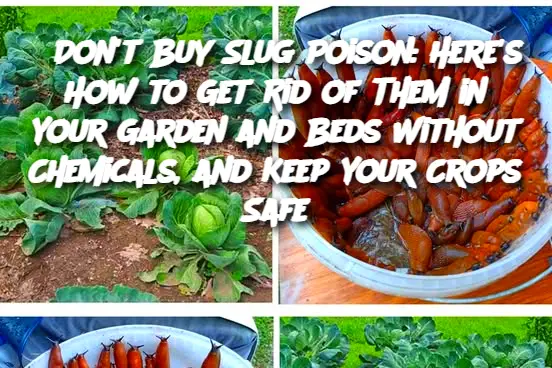5. Hand-Picking and Relocating If you have a manageable slug problem, one of the most effective ways to deal with them is to simply pick them off your plants and relocate them. This method requires a bit of patience, but it’s entirely chemical-free and will directly reduce the slug population in your garden. You can do this in the evening or early morning when slugs are most active. Place them in a far-off area of your yard where they won’t be a problem.
6. Use Natural Predators Encourage natural predators like birds, frogs, and toads to take care of your slug problem. Birds, in particular, are excellent slug hunters. To attract them, provide birdhouses, bird feeders, and even small water features. Frogs and toads are also known to eat slugs, so creating a toad-friendly environment in your garden will keep your slug population under control.
7. Plant Slug-Repellent Plants Certain plants naturally repel slugs. Consider adding some of these to your garden as a protective barrier around more vulnerable plants. Slugs tend to avoid plants like lavender, rosemary, fennel, and thyme. Not only do these plants add beauty and fragrance to your garden, but they’ll also act as natural slug repellents.
8. Keep Your Garden Tidy Slugs love to hide in damp, dark places. To make your garden less inviting, keep it tidy and free of debris. Remove any old leaves, mulch, or weeds where slugs can hide during the day. Consider using a raised bed or other techniques to improve drainage and reduce moisture in the soil, as slugs thrive in wet conditions.
9. Nematodes (Beneficial Microorganisms) For a more advanced solution, consider using beneficial nematodes. These microscopic worms can be introduced to your garden soil, where they seek out and infect slugs. This natural method effectively reduces slug numbers over time without harming other wildlife or plants. Nematodes are available at garden centers and online.
10. Create Slug Traps with Grapefruit Halves Slugs are drawn to moist environments, and a simple trick is to cut a grapefruit or orange in half and place it, cut side down, in your garden. Slugs will crawl under the fruit for shelter, and you can easily collect them in the morning. This method is eco-friendly and can be a fun way to deal with slugs while getting rid of leftover fruit.
Conclusion: Getting rid of slugs in your garden doesn’t require harsh chemicals or dangerous poisons. By using a combination of natural methods like diatomaceous earth, copper barriers, beer traps, and beneficial predators, you can protect your crops and enjoy a healthy, thriving garden. Keeping your yard slug-free is not only better for the environment but also safer for pets, children, and beneficial insects. So, skip the store-bought slug poisons and try these eco-friendly alternatives for a cleaner, healthier yard!
ADVERTISEMENT

